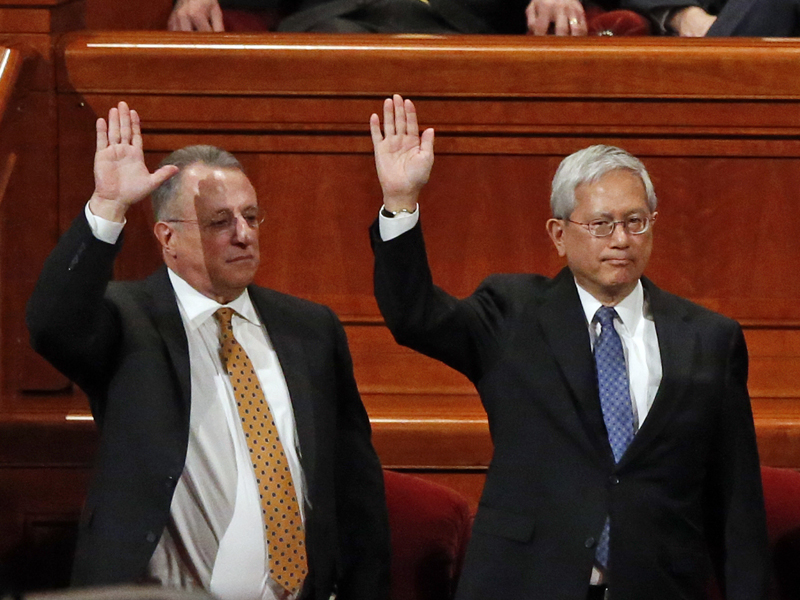EDITOR’S NOTE: Sightings is sponsored by the Martin Marty Center for the Public Understanding of Religion at the University of Chicago Divinity School. Sign up to get Sightings in your inbox twice per week (on Mondays and Thursdays). You can also follow us on Facebook or Twitter.
Newspaper or magazine editors who headline items with words like “General Conference” or “Synod” or “Annual Meeting” know they have to fight for readers’ attention. Too bad, since much that can be of significance to nonmembers of denominations does occur at such gatherings. But to many, their stories will seem to be old-shoe, well-worn, or over-familiar in character. One notable exception within the world of religion news is the Church of Jesus Christ of Latter-day Saints or, more readily in headline, Mormons. In the pressroom we used to say: “Mormons are like everyone else—only different.” Now it might be more in place to observe: “Mormons are different than everyone else—only, more and more, similar.”
This year’s General Conference meeting in, yes, the same old place, Salt Lake City, March 31 and April 1, remained different, in the main. Those of us non-Mormons (“Gentiles”) who depend to a considerable extent, as I do here, on journalist Jana Riess, do not find her exotic. She’s a Wellesley-Princeton Seminary-Columbia University alumna who lives not in Utah but in Ohio. Like so many Mormons of our acquaintance, she’s a convert—an ex-Lutheran. And, like most converts, she takes pains to affirm what her newer-found faith teaches. This means that many observations and behavioral marks will indeed appear “different.” Let’s see what she’s been chronicling.
Samples: Mormons were different last year because they kept growing, even in the United States. Still, they are also the same, as Riess notices, in that growth is slowing. Like other traditionally all-white religious bodies—here’s the “same” part—Mormons are trying to catch up by naming leadership which imparts cultural color and marks of distant origins. One new apostle is Brazilian (Ulisses Soares), and the other, though American, is of Asian descent (Gerrit Gong). More: a Mormon distinctive is the prescribed women’s temple garment, in vaguely T-shirty mode, which had been rumored to be in for a change to something “on the verge” of sleevelessness. Yet the outcome is similar to most such innovations elsewhere, as Riess testifies when she observes that the result this year is a new-and-somewhat-improved ritual garment, far from sleeveless, and really comfortable.
Alas, the talk at General Conference was in another case similar to that in other church gatherings, taking the form of shock over a sexual abuse case. It had been known about for some time, but was noised widely by Salt Lake City television station KUTV during the conference weekend. This was the story of abuse by a former president of the LDS Missionary Training Center, a higher-up (though not hierarchical) post. So these “different” Saints have scandals in common with others. Oh, and this from Riess made news: “A heckler disturbed the proceedings, shouting ‘Stop protecting sexual predators!’ three times.” I am trying to find something different between this event and scandal and those which too often provoke “disturbances” in most church bodies.
For all the “sames” and “differents” in the media accounts and in my summary, I am ready to say that there were also signs of imagination, sounds of the voices of diverse memberships (including more roles for women), signals of faith-full community that often alienates anti-Mormons—of whom there are still millions—but which inspires not only LDS members but many others who take seriously their faiths and practices in a time when these are so often compromised, overlooked, or abandoned. A teacher used to recite to us a jingle about church bells, with the line: “It’s nice to have Old Trinity to remind us of Divinity.” Latter-day Saints, by their forthrightness, often “remind” others what true commitment looks like, including when, as in the present case, their church moves, however guardedly, to embrace change.





